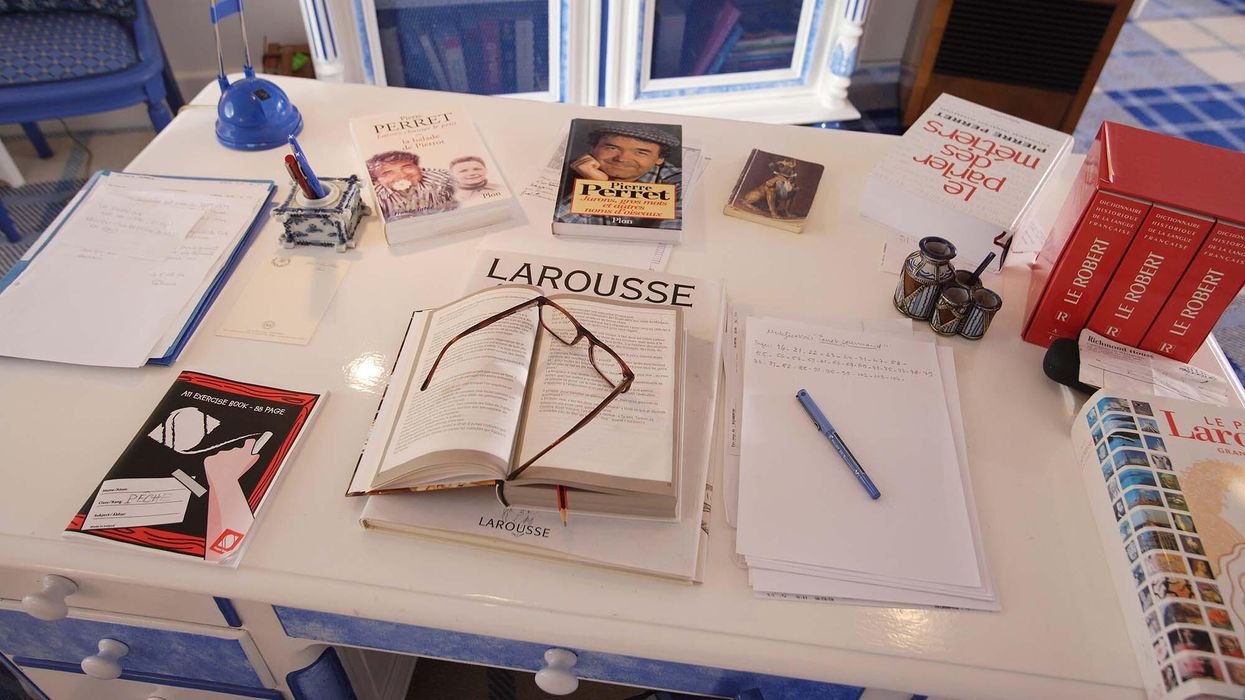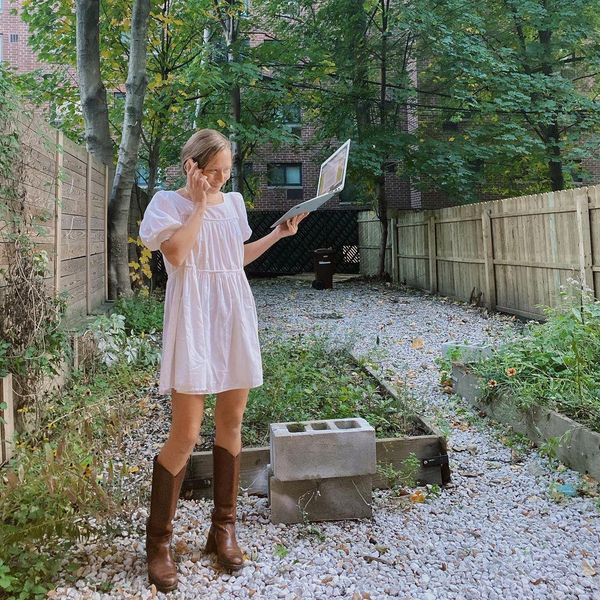Actually, “Dating For The Plot” Is A Good Thing
There’s no bad dates, only good stories.

I can tell you what I wore on nearly every first date I’ve ever been on. The template doesn’t vary: vintage medium wash Levi’s, white T-shirt, Converse high-tops, dime-sized gold hoop earrings. There are seasonal adjustments—add knitwear for winter, sub sleeveless top for summer—but the concept remains unchanged.
My therapist and I could unpack whatever personal trauma led me to believe I’m best-equipped for romance in blue jeans, but the more poetic point is about my fascination with story. An outfit recipe is my form of exposition; my way of whittling myself into character before performing the role of First Date Attendee under the approving (or dismissive) gaze of someone else: Sneakers to indicate groundedness. Levi’s for the sake of tradition. T-shirt to suggest I’m low-maintenance (in theory).
We apply the same character treatment to our romantic prospects. In conversation, we compress our entanglements into convenient monickers: the chef, the twin, the one with the car. There’s nothing inherently cruel or flippant about this framing. It’s a way of making the other person’s nuances digestible and turning them into a story. In my own circles, you might hear mention of the orphaned taxidermist, the fiscally-generous married man, the violin player who technically lived in the basement of a deli. Maybe the poet who sported a decorative scarf (unironically), or the other poet with the misspelled tattoo (we’ve since called a moratorium on poets). Maybe the boy with the beautiful mom.
We all love a romantic plot line (think: Sally Rooney, any movie featuring Rachel McAdams, The Bachelor franchise, Taylor Swift’s unabashed 10-minute break-up ballad), so it makes sense to lean into “protagonist mode” when pursuing our own amorous situations. It’s “the desire to fictionalize life a bit,” as Cris Krauss puts it in I Love Dick. And, frankly, we all do it.

Photo: Courtesy of Eilza Dumais
I’m not the first to suggest that the true pleasure in dating is in the recounting; in waxing dramatic about the state of our affairs to friends over dinner. In the end, it’s not about diminishing reality, or boxing it away into neat rectangles of prose. It’s about aggrandizing it. Hyperbolizing it. Embracing it in ALL CAPS. Or maybe, just folding a dash of comedy into the disappointing details of inhabiting a real life, lived in real time, rather than on paper.
Here’s the divisive bit, though: For the many ways that we enjoy narrating our own lives, I still find that I’m met with disapproval when I make the wry assertion that I’m “dating for material” (I was once reported on Bumble for posting a bio that read, “this is purely for journalistic purposes”).
It’s not lost on me that this catchphrase is rooted in insecurity (does rejection even count if it’s in the name of research??). And I’m aware that there’s a distinction between dating for the sake of story, and reconfiguring the details of a romantic encounter into fodder after the fact. But I’d still argue that we’re all “dating for the story” from the get-go, even if we choose not to say it outright. Even if we have no plans to write it down. “We tell ourselves stories in order to live,” goes the old Didion adage—and apparently, in order to love, too. Or to try to, anyway.
Think about it: On your last date, within seconds of arriving, did you find yourself assessing your counterpart’s tote bag, the timbre of their voice, the way they held their silverware? Were you plotting out the ways they might fit into the storyline of your life? Did you imagine waking up next to them? Sitting beside them on an airplane? Did you craft narratives based on their dating app profile, before you’d even met? Isn’t all of that just storytelling in the end?
Admittedly, it is crass to state your writerly intentions before a date. It breaks the fourth wall; takes you both out of character. On my end, it doesn’t help that I’ve made a career, and a personality, out of writing things down. Though I’d argue that an inclination toward gathering “material” operates as a vehicle of presence than it does a remove. I’m not interested in forcing narratives where there are none, nor am I slandering anyone, online (were I reporting on assignment, there’d be journalistic ethics involved). Instead, I’m looking for details to color in fictional settings; characters to force me out of writer’s block. I’m taking notes, preserving bits of these interactions, and relishing them for their newness. These are the details that add texture to life on paper.

Photos: Courtesy of Eliza Dumais

I’m not immune to the lusting, the obsessing, the daydreaming, the recoiling. It’s just that writing things down—field notes on bar napkins—is the best way for me to give chaos a shape. The writer in me is romantic, and the romantic in me is avoidant. Writing is my attempt at bridging that gap.
It’s worth mentioning that dating is often construed as a zero-sum game. You know what you’re signing up for when you lean in—you’ll kiss frogs and DJs and investment bankers who tip poorly, before you encounter someone you want to wake up with on a Sunday morning. And when a friend comes to you explaining that last night’s date demanded she read his thesis on Heart of Darkness while dipping his French fries in RANCH DRESSING, odds are, you’ll say something like this: Hey, at least you got a good story out of it. Per the holy gospel of Nora Ephron, “Everything is copy.”
You could call it a defense mechanism; a way of deflecting the sting of rejection. But it’s a form of optimism, too. If we choose not to believe that there’s a climax and resolution awaiting us then we’re left with the debris of our failed dates with no way forward.
Much of what I know about people comes from details: ceramic plates, physical traits, small tattoos. On dates, I’m mystified by the particulars of another person. Does he carry cash? Answer the phone when his mother calls? Crack his knuckles? Cross his legs? “Question your teaspoons,” writes George Perec in Species of Spaces. “Describe what happens everyday and recurs everyday: the banal, the quotidian, the obvious, the ordinary, the infra-ordinary, the background noise.”
The moral is this: Those details matter, regardless of the second-date potential. The teaspoons and the cracked knuckles, they prove that paying attention is a form of kindness; that real life has texture. That we might as well take notes in order to inhabit it more fully.
Photo: Eric Robert/Getty
Want more stories like this?
Inside This Band's Complex, Multifaceted Love Story
What Does Sensuality Smell Like?
From Euphoric To Terrifying—5 Couples Break Down Exactly What It Felt Like To Fall In Love




